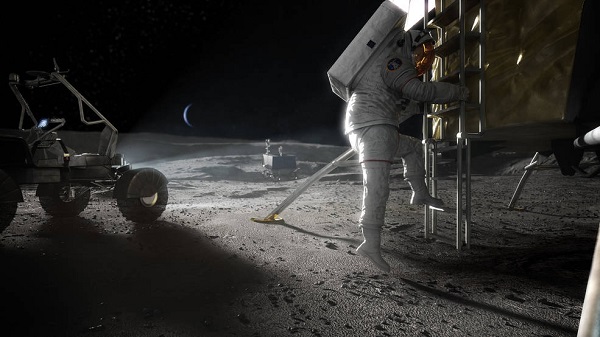Washington, (Asian independent) The US space agency has identified 13 candidate landing regions near the lunar south pole, as it prepares to send humans back to the Moon under the Artemis programme in 2024.
Each region contains multiple potential landing sites for Artemis III, which will be the first of the Artemis missions to bring crew to the lunar surface, including the first woman to set foot on the Moon.
“Selecting these regions means we are one giant leap closer to returning humans to the Moon for the first time since Apollo,” said Mark Kirasich, deputy associate administrator for the Artemis Campaign Development Division.
“When we do, it will be unlike any mission that’s come before as astronauts venture into dark areas previously unexplored by humans and lay the groundwork for future long-term stays,” Kirasich said in a statement late on Friday.
Each of these regions is located within six degrees of latitude of the lunar south pole and, collectively, contain diverse geologic features.
Specific landing sites are tightly coupled to the timing of the launch window, so multiple regions ensure flexibility to launch throughout the year, said NASA.
All regions considered are scientifically significant because of their proximity to the lunar south pole, “which is an area that contains permanently shadowed regions rich in resources and in terrain unexplored by humans”.
“Several of the proposed sites within the regions are located among some of the oldest parts of the Moon, and together with the permanently shadowed regions, provide the opportunity to learn about the history of the Moon through previously unstudied lunar materials,” said Sarah Noble, Artemis lunar science lead for NASA’s Planetary Science Division.
The analysis team weighed landing criteria, including the goal to land close enough to a permanently shadowed region to allow crew to conduct a moonwalk, while limiting disturbance when landing.
This will allow crew to collect samples and conduct scientific analysis in an uncompromised area, yielding important information about the depth, distribution, and composition of water ice that was confirmed at the Moon’s South Pole.
All 13 regions contain sites that provide continuous access to sunlight throughout a 6.5-day period – the planned duration of the Artemis III surface mission.
Access to sunlight is critical for a long-term stay at the Moon because it provides a power source and minimises temperature variations.
Through Artemis, NASA will land the first woman and the first person of colour on the Moon.
Meanwhile, NASA’s much awaited Artemis 1 moon rocket will likely be launched in late August.
NASA has tentatively selected 3 dates for the launch: August 29, September 2, and September 5 for the uncrewed mission.








